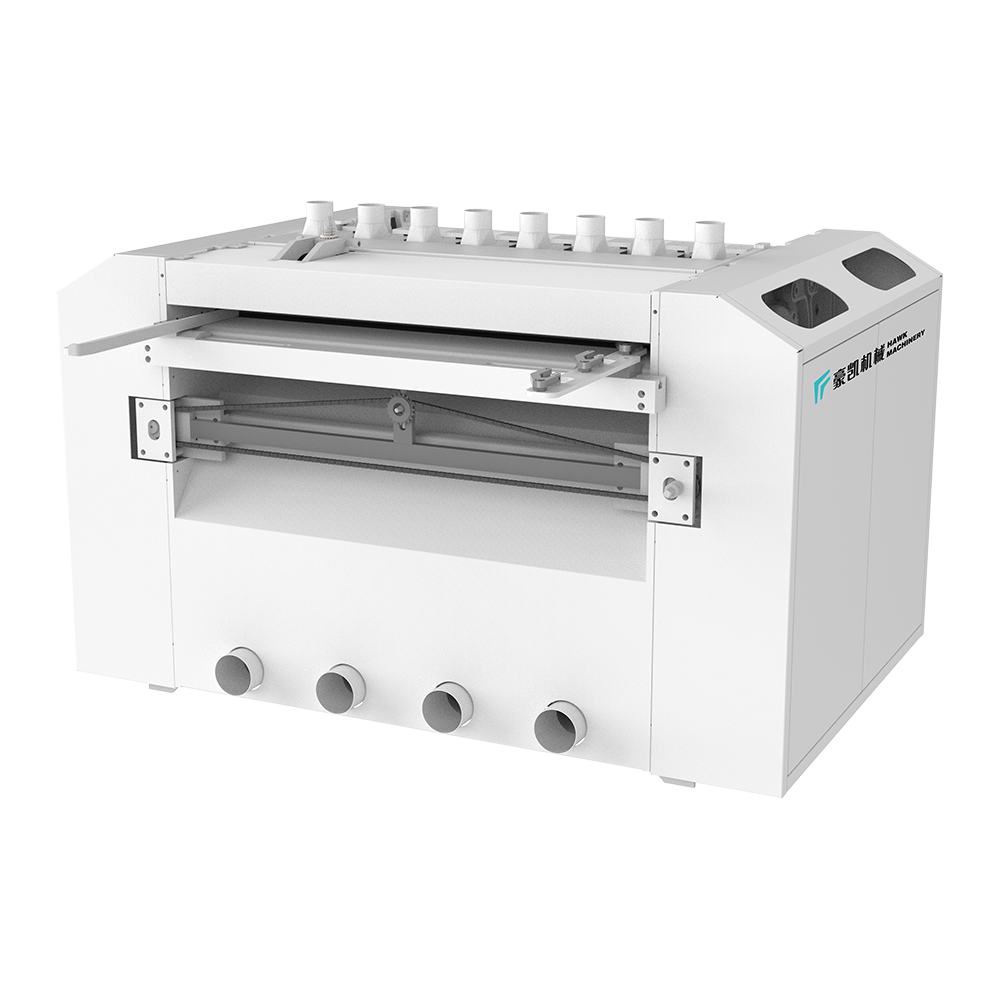Floor slotting line (double end tenoner)
The product can slot the floor vertically and horizontally. The machine series c...
See DetailsIn the processing of Multi Rip Saw Machine, optimizing the cutting effect is the key to improving production efficiency, ensuring cutting quality and extending equipment life. In order to obtain the best cutting effect, you can start from the following aspects to optimize:
1. Optimize the feeding system
Ensure stable feeding: The stability of raw material feeding directly affects the cutting effect. Ensure that the feeding speed is uniform and stable to avoid material vibration or deviation, so as to ensure the accuracy of each cutting.
Properly adjust the feeding speed: According to the thickness, hardness and specifications of the material, adjust the feeding speed to ensure that there will be no problems of material jamming or excessive wear during the cutting process.
2. Choose the right saw blade and tool
Choose the right saw blade material: For different processing materials (such as hardwood, cork, plywood, plastic, etc.), choose the right saw blade material (such as tungsten steel, carbide, etc.). Saw blades of different materials have different cutting efficiency and service life.
Adjust the tooth shape of the saw blade: The tooth shape of the saw blade will affect the cutting accuracy and efficiency. For different cutting needs, different tooth shapes can be selected, such as straight teeth, bevel teeth, curved teeth, etc., to ensure the flatness of the cutting surface.
Keep the saw blade sharp: Sharpen or replace the saw blade regularly to avoid blunt saw blades causing unsmooth cutting or processing errors.
3. Adjust the cutting depth and angle
Reasonably set the cutting depth: Adjust the cutting depth of the saw blade according to the thickness and hardness of the material. Too large a cutting depth may cause the saw blade to be overloaded and affect the cutting effect; too small a cutting depth may affect production efficiency.
Adjust the cutting angle: Ensure that the angle between the saw blade and the workpiece is appropriate to avoid uneven cutting or unnecessary torque, causing machine vibration or cutting deviation.
4. Control the cutting speed and material ratio
Adjust the cutting speed: On a multi-cut saw machine, the cutting speed and feed speed must match. If the cutting speed is too fast, the saw blade is prone to high temperature, causing the material to burn or the saw blade to wear too quickly; too slow may reduce efficiency.
Avoid overload: During the cutting process, keep the machine working within a reasonable load range and avoid overload operation to ensure the cutting quality and long-term stability of the equipment.
5. Optimize the alignment and calibration of the machine
Ensure the alignment of the saw blade: On the multi-cut saw machine, all saw blades need to be precisely aligned. If the saw blade is not aligned accurately, it will cause the cutting to be uneven, the surface to be uneven, and even cause material waste. Check and calibrate the alignment position of the saw blade regularly.
Adjust the guide rails and worktable: The flatness of the guide rails and worktable is crucial to the cutting effect. Make sure the guide rails are straight and free of wear to ensure stable feeding of the material.
6. Improve the handling and preparation of materials
Pre-treat the material: Before cutting, make sure the surface of the material is flat and there is no obvious bending or deformation, so as to avoid affecting the cutting quality due to material problems.
Choose the right material: For the efficient operation of the multi rip saw machine, make sure that the size of the material meets the maximum processing capacity of the machine. Materials beyond the machine's capacity may cause cutting difficulties or equipment failure.
7. Use cutting fluid or lubricant reasonably
Use cutting fluid: For some hard materials (such as composite boards, plastics, etc.), cutting fluid or lubricant can be used to reduce friction, reduce tool temperature, extend tool life and improve cutting quality.
Keep the lubrication system normal: Check the lubrication system regularly to ensure that the moving parts of the machine, such as guide rails, gears, etc., are fully lubricated to reduce wear and ensure accuracy.

8. Adjust the vibration and stability of the machine
Ensure the stability of the machine: The multi-cut saw machine may produce a certain vibration during operation. If the machine is unstable, it may cause an uneven cutting surface or even the saw blade to fall off. Reduce vibration and ensure cutting stability by strengthening the machine base and adjusting the working environment.
Avoid material deformation: Too fast feed speed or uneven material may cause material deformation and affect the cutting effect. Ensure that the material is evenly stressed during the cutting process.
9. Regularly check and maintain equipment
Regularly check machine parts: Regularly check key components such as motors, bearings, belts, etc. to ensure their normal operation. Long-term stable operation of equipment is the basis for optimizing cutting effects.
Perform regular calibration: Perform regular machine calibration to ensure that components such as saw blades and guide rails are always in optimal working condition.
10. Data monitoring and intelligent adjustment
Use intelligent monitoring system: Modern multi-cut saws are usually equipped with intelligent monitoring systems that can track various data during the cutting process in real time, such as feed speed, cutting temperature, tool wear, etc. Use these data for optimization and adjustment.
Automatically adjust cutting parameters: Some high-end multi-cut saws support automatic adjustment of parameters such as feed, cutting speed and depth, and achieve the best cutting effect through machine adaptive adjustment.
The cutting effect of multi-cut saws can be significantly optimized through reasonable machine adjustment, appropriate tool selection, stable feed control and precise equipment maintenance. This not only helps to improve production efficiency, but also ensures that each cut achieves the ideal quality, reduces material waste and machine failure.